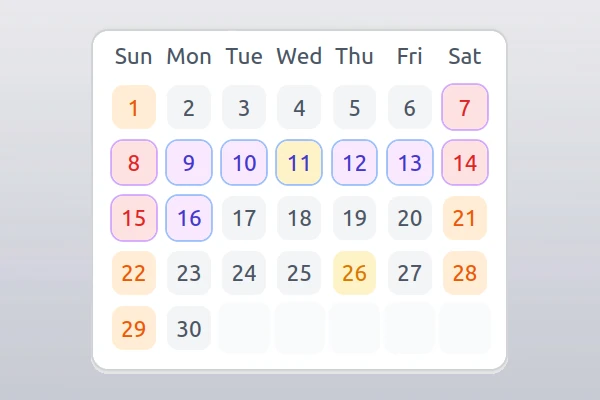I was curious how long rush hour really lasts in Charlotte and how much time you could realistically save by shifting your workday slightly.
As such, I picked four locations in the cardinal directions from the city center, targeting commutes near the city’s average of 25-30 minutes.1
Then, I compiled Google Maps traffic estimates across each weekday,2 with morning estimates from each location to uptown and evening estimates from the return trip.
Overall commute trend#
In general,
- Rush hour lasts about 2-3 hours, with traffic remaining elevated for roughly 1.5 hours before and after the start/end of standard business hours.
- Afternoon rush hour is worse than the morning rush hour.
If you’re able to shift your workday, the gains are pretty modest:
- Starting 30 minutes later saves virtually no time, on average.
- Starting 30 minutes earlier or an hour later saves <10% of your commute, only a couple of minutes for the average driver.
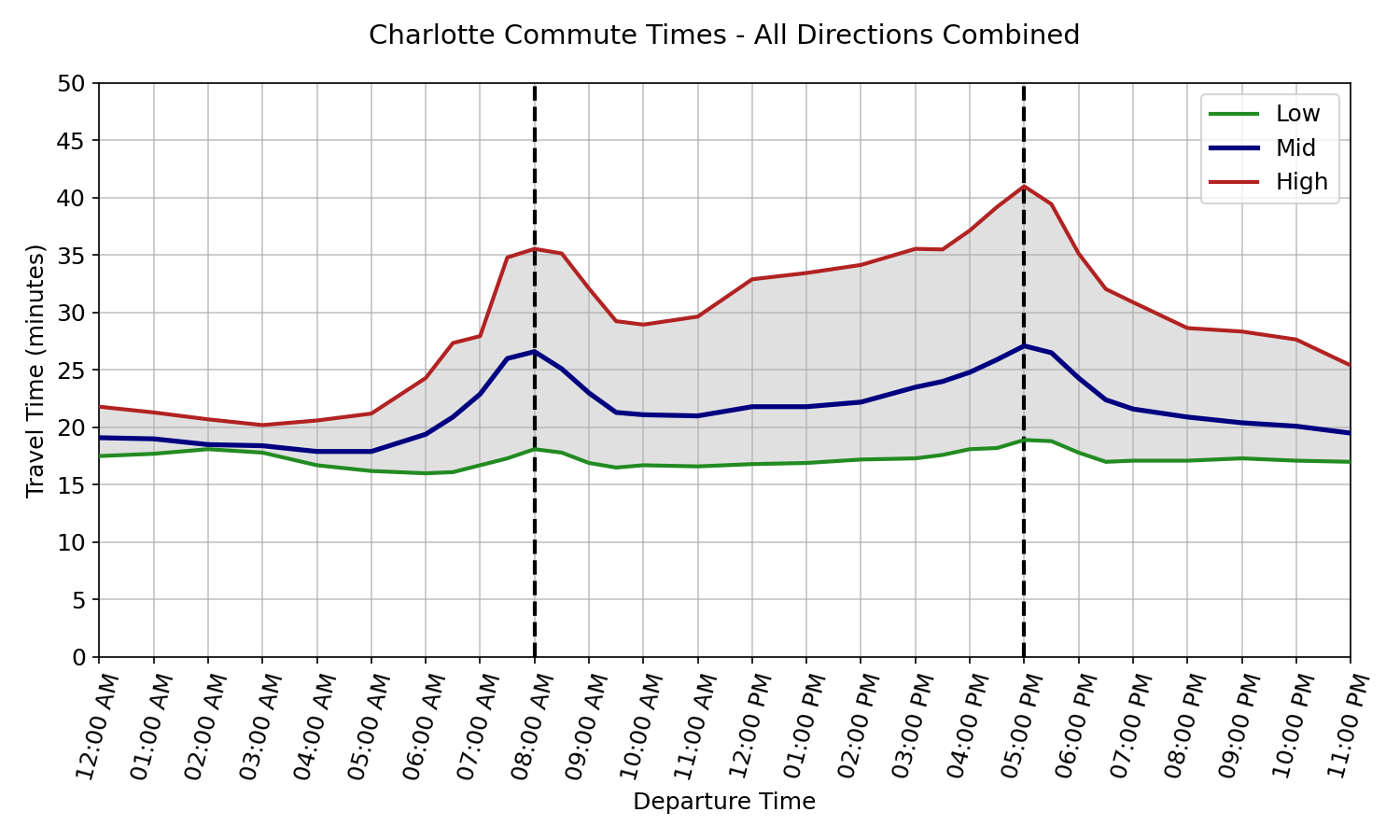
Best weekdays#
Overall,3
- The best day to commute is Friday, followed by Monday.
- The worst days are Tuesday and Wednesday.
- Rush hour starts about an hour earlier and is more spread out on Fridays, presumably because many employees leave early for the weekend.
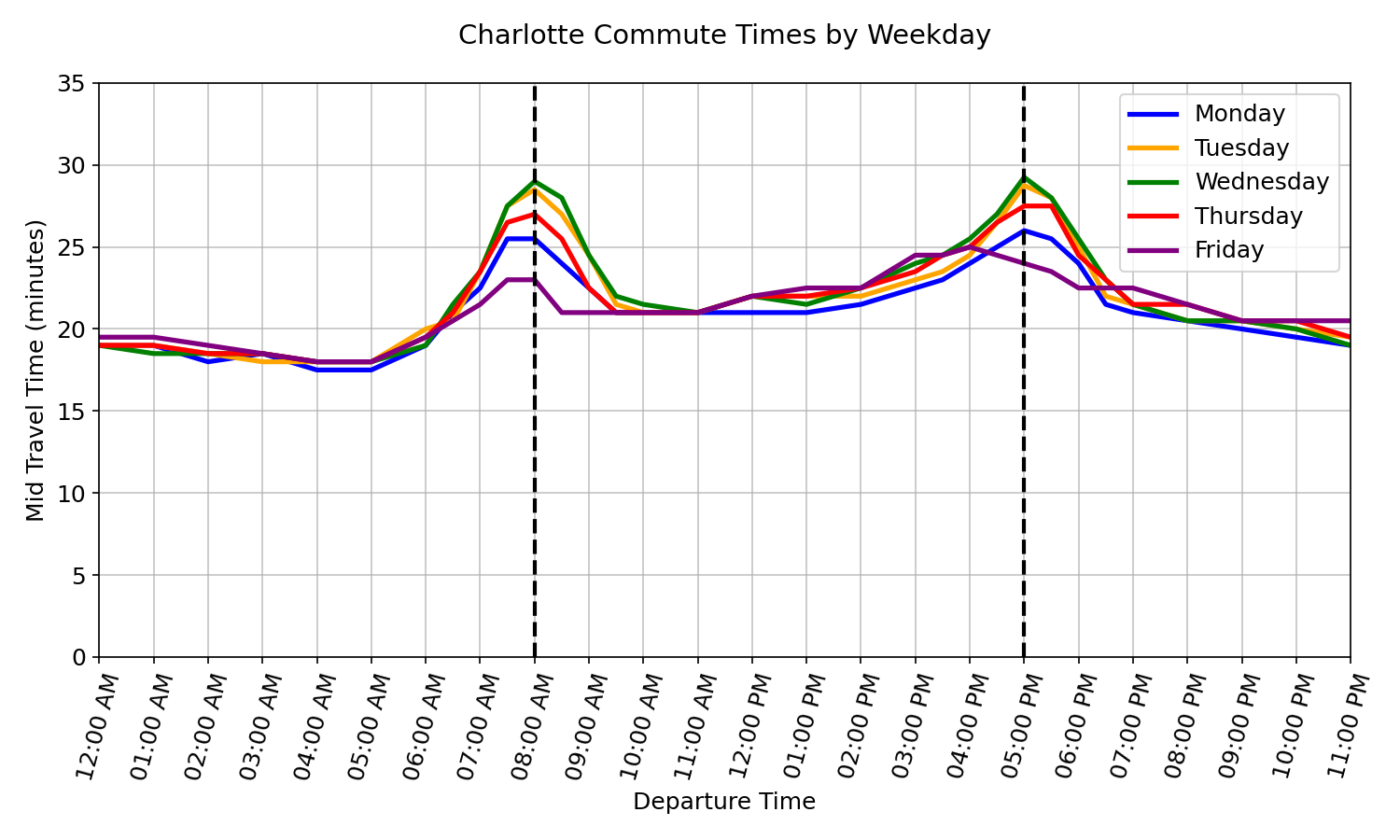
North Charlotte#
Directly north has the shortest and most consistent commute due to easy I-77 access and lower population density.
Indeed, this is the longest commute by distance of the four directions but the shortest by time.
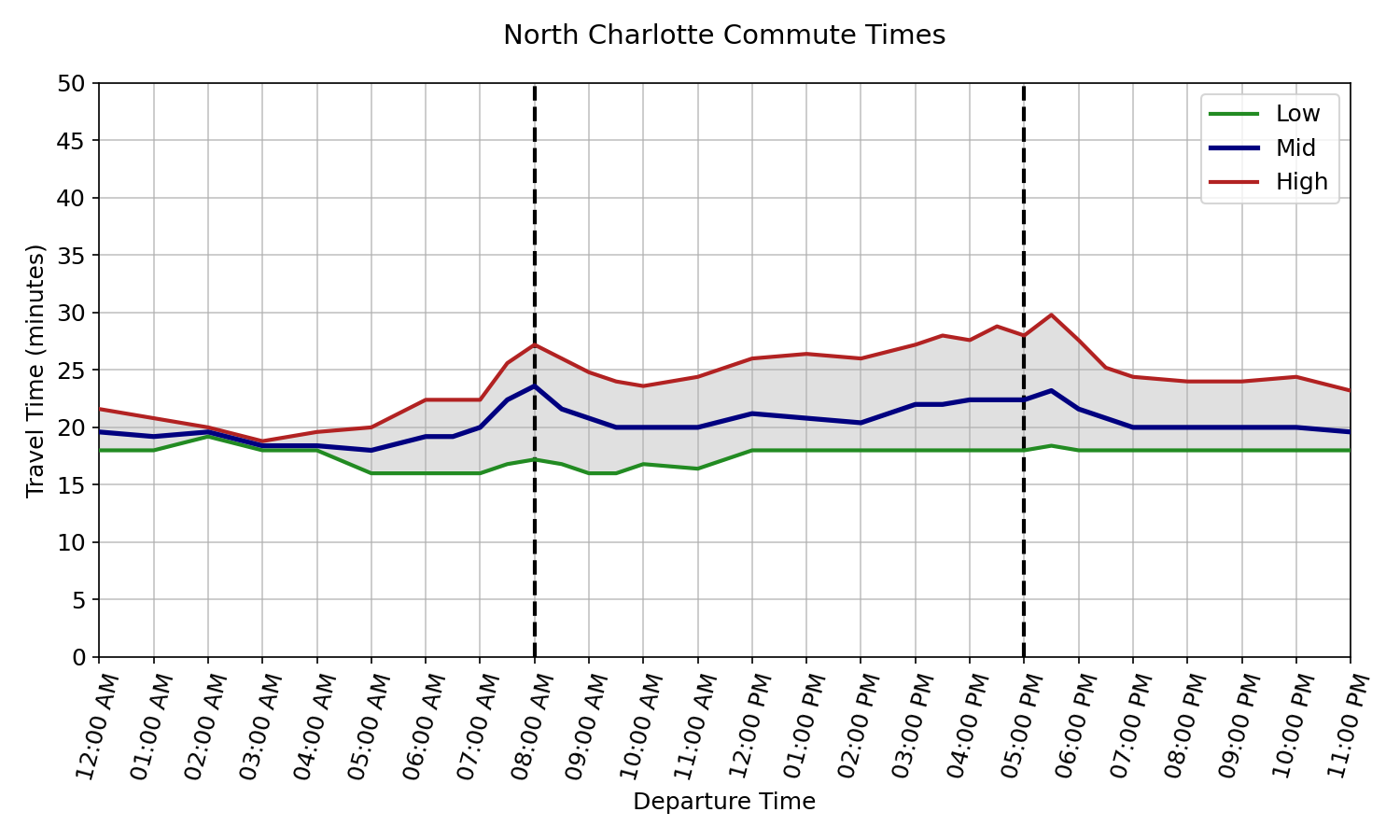
East Charlotte#
Interestingly, East Charlotte’s rush hours peak about 30 minutes earlier in the morning and 30 minutes later in the evening than the rest of the city.
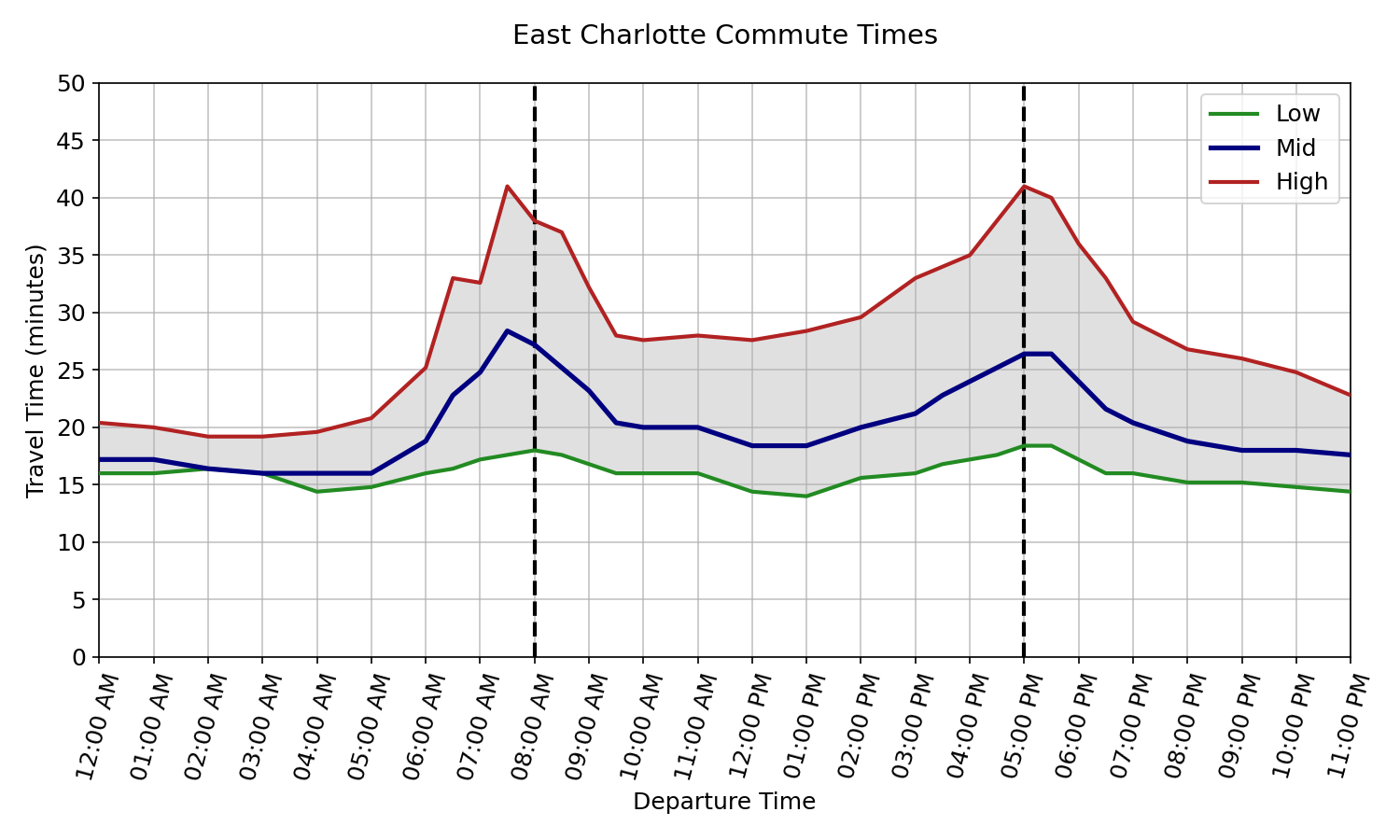
South Charlotte#
South Charlotte has the most variability in commute times, likely due to higher population density and reduced highway access.
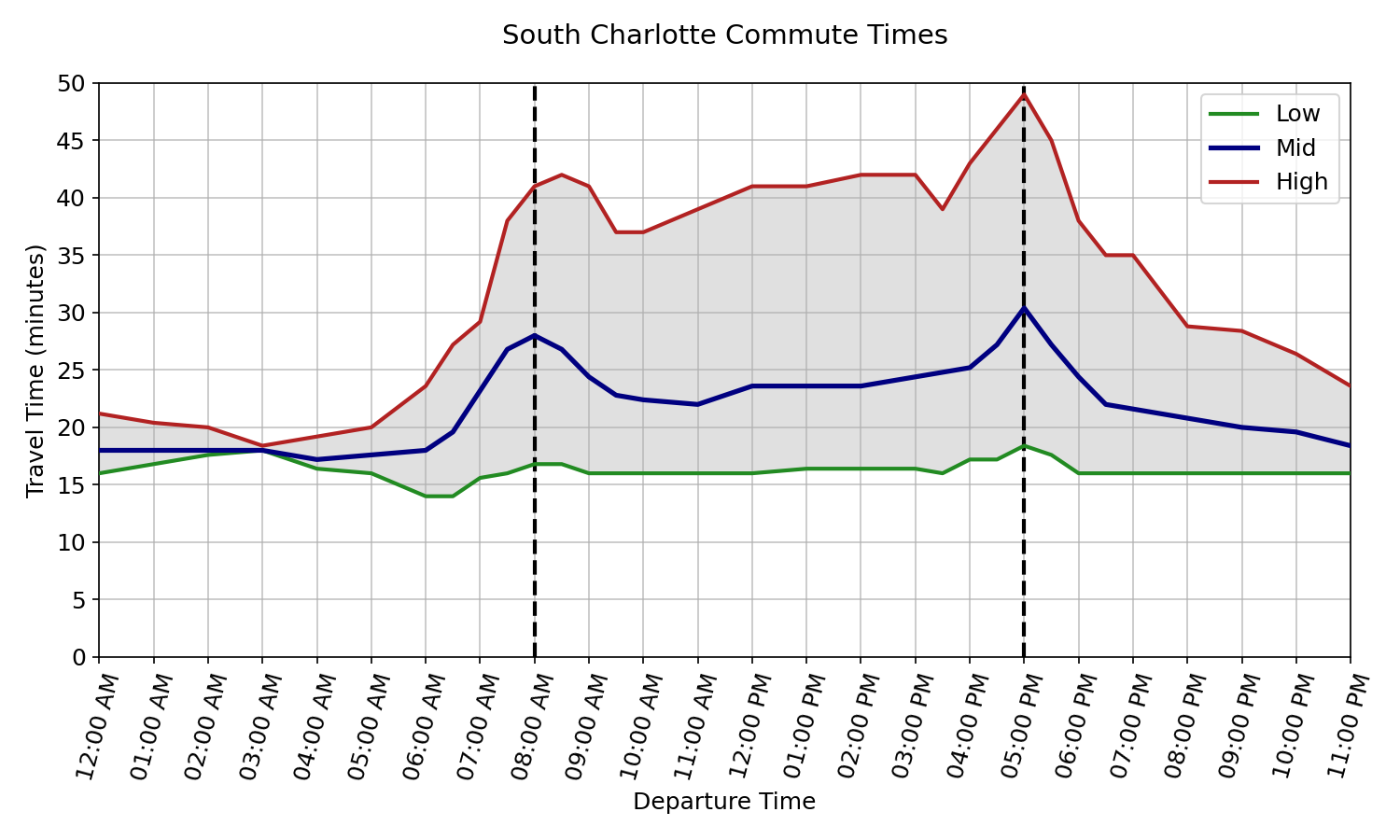
West Charlotte#
Directly west has an unusual return commute because the airport is located in this direction, so the selected location had to be placed farther away to avoid the airport itself.
As a result, the return direction competes heavily with airport traffic and congestion from the small number of highways crossing the Catawba River into Gaston County.
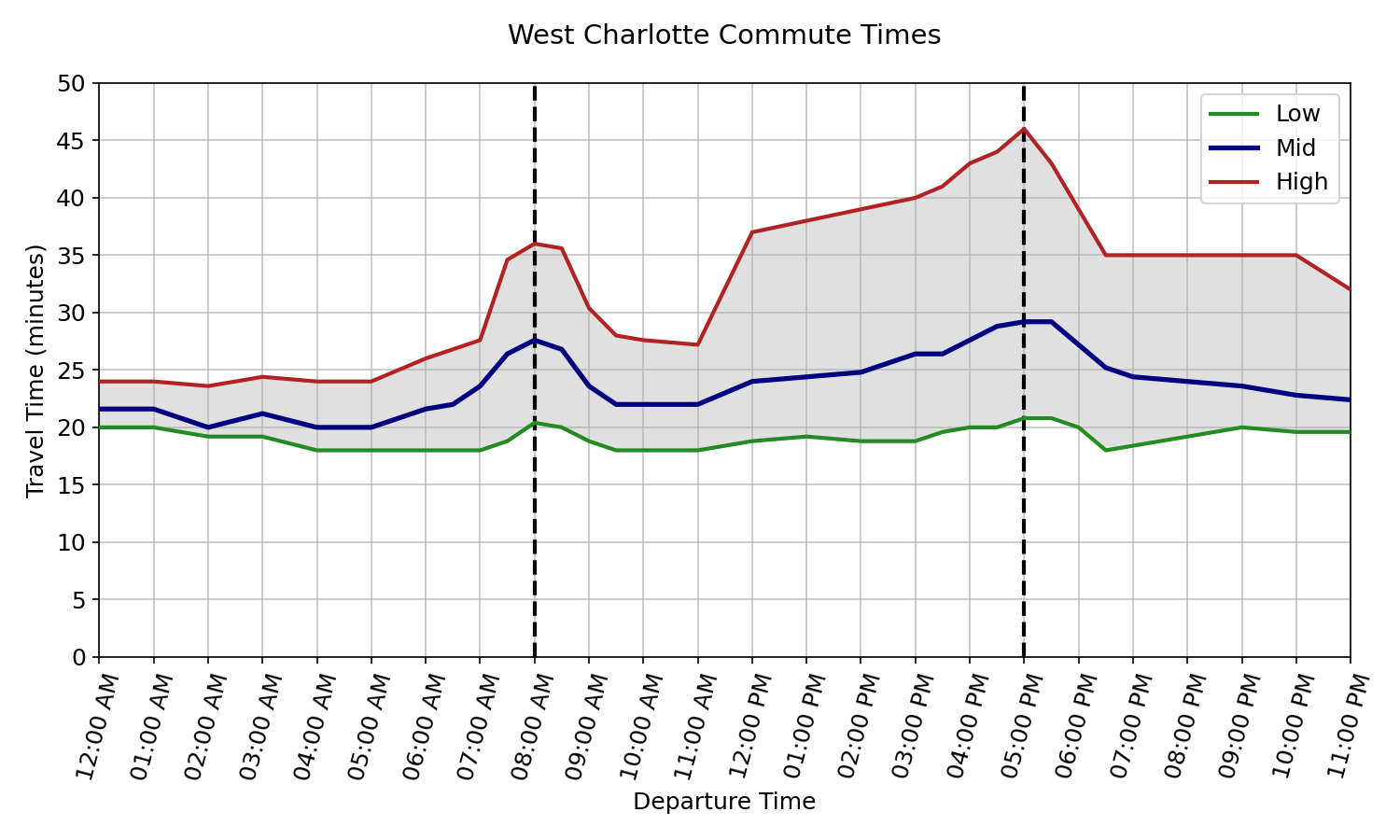
Shifting for longer commutes#
This analysis focused on typical city commutes, but you’ll need to shift the data if your commute is significantly longer or shorter.
Roughly speaking, an extra 30 minutes of commute shifts peak departure times about 30 minutes earlier in the morning and later in the evening.
Otherwise, you can check your own commute directly on Google Maps for different possible departure times. You could also experiment and collect your own data if you have the flexibility.
See also and references#
Your most reliable source for commute times will likely be your preferred GPS app and your own commute history.
Other online data on this topic seems wildly incorrect. For example,
- Several top Google results from realtors claim that a Ballantyne to uptown commute takes 22 minutes, but that’s only true with zero traffic. At 8 AM on a weekday, it’s often more than double that!
- The same sources suggest rush hour adds about 10 minutes, which is similarly inaccurate.4
- Forbes has claimed that Charlotte has almost the worst commute in the nation despite its fairly typical commute times, since their methodology penalizes larger (less dense) cities.5
The distances range from roughly 8-14 miles. The exact locations were:
- Charlotte City Center: +35.2272, -80.8431
- “North Charlotte”: +35.40, -80.8431
- “East Charlotte”: +35.2272, -80.72
- “South Charlotte”: +35.13, -80.8431
- “West Charlotte”: +35.2272, -81.00
The specific dates were chosen to maximally spread across the year, avoiding any dates within a week of a U.S. or NYSE holiday. The final dates were:
- Monday, 02/02/26
- Tuesday, 04/21/26
- Wednesday, 07/15/26
- Thursday, 12/17/26
- Friday, 10/02/26
This analysis is based on specific dates, so in theory some seasonal effects could be missed. However, I spot checked a single week and found the same patterns. I also doubt Google Maps’ traffic models include much seasonality beyond major holidays, and uptown office work itself isn’t particularly seasonal anyway. ↩︎
Of course, these sources have an incentive to stretch the truth to sell houses, but I would hope anyone doing the level of research involved on a house purchase would be dissuaded by such obviously false claims. ↩︎
Charlotte does have some of the worst drivers in the nation and some poor infrastructure, but this is par for the course for the South in general. ↩︎

